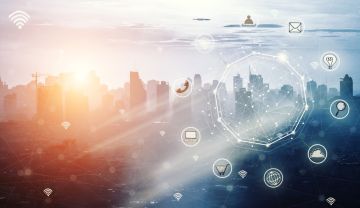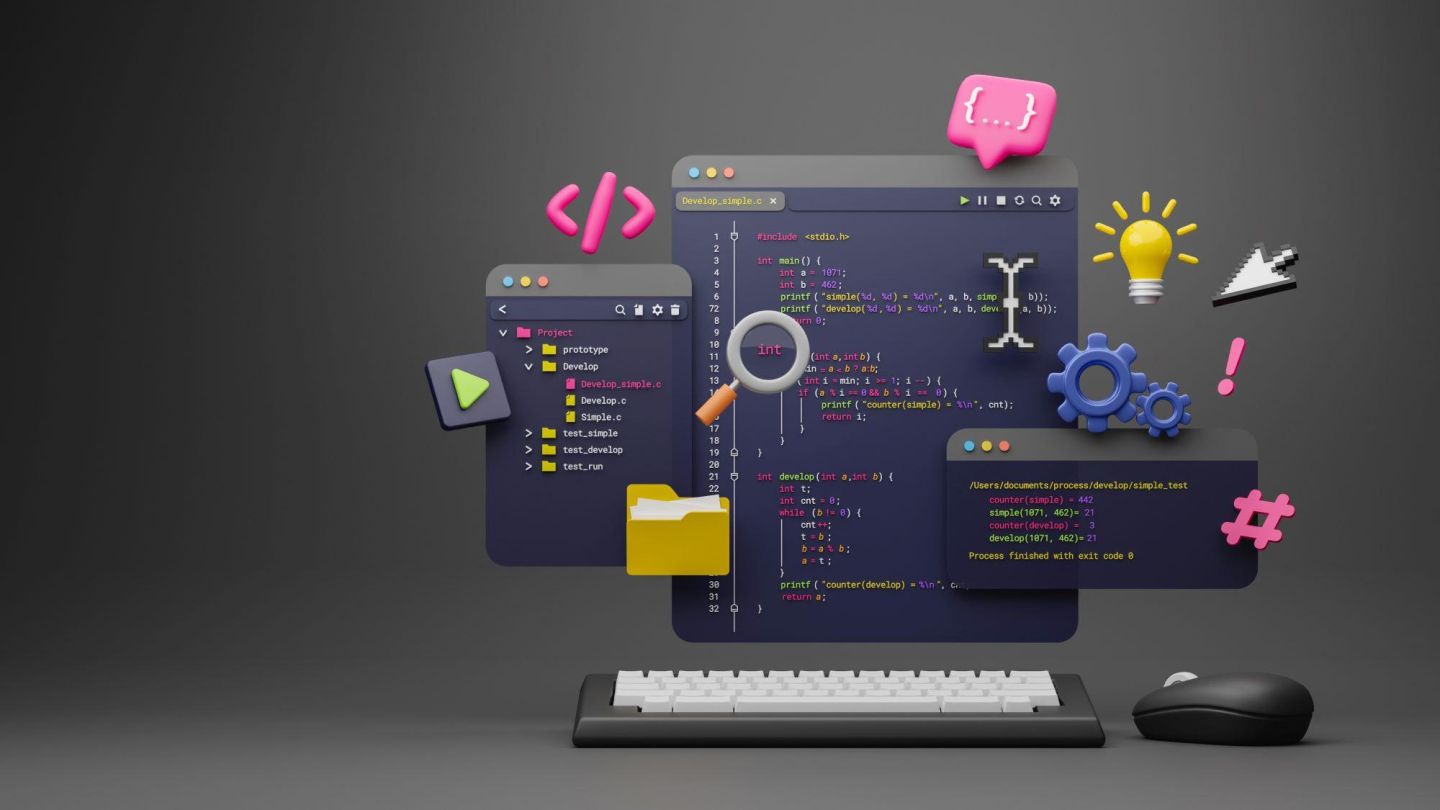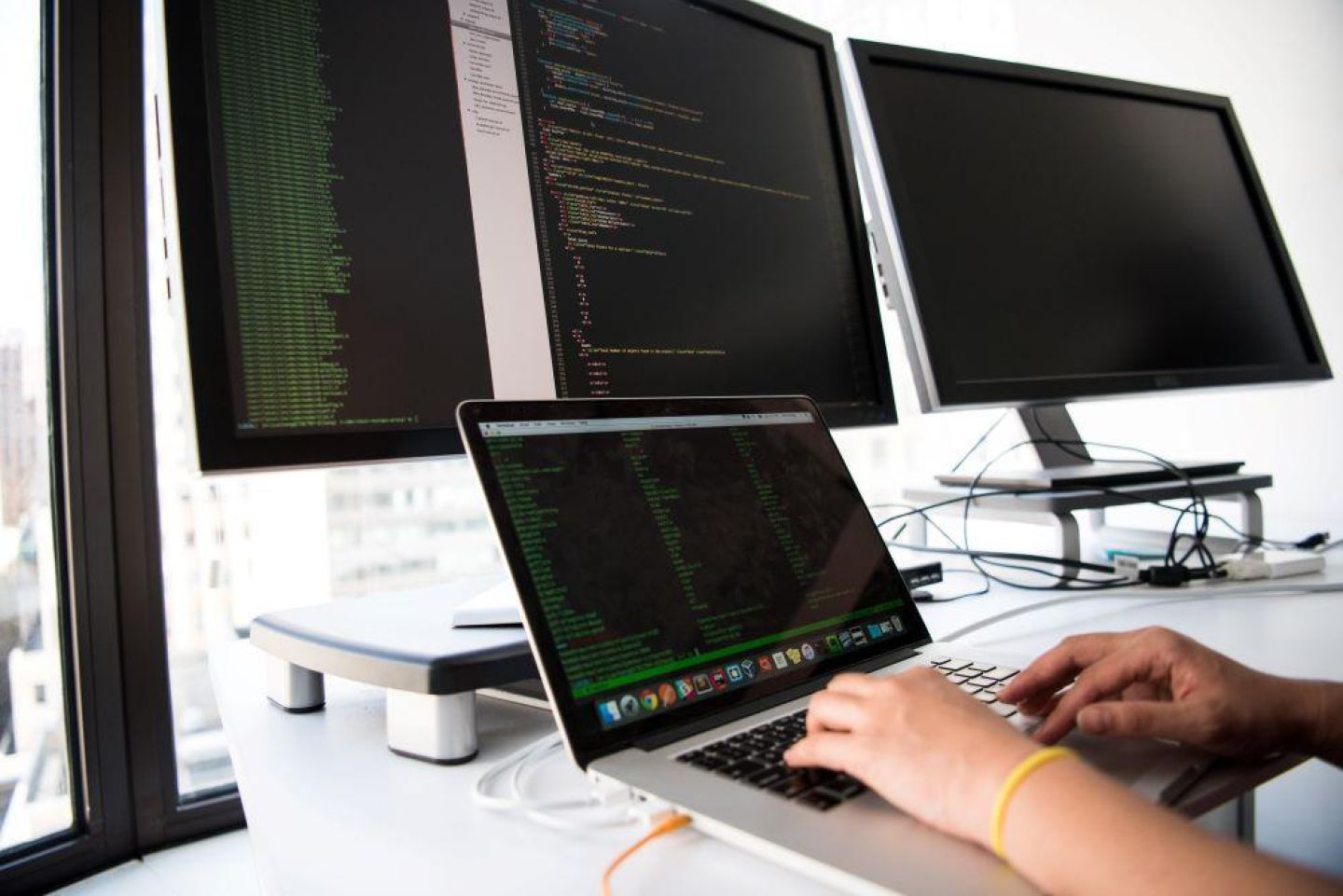Computer Science (Internet of Things)

Be part of the Internet of Things (IoT)
The BSc (Hons) in Computer Science (Internet of Things) is an exciting course developed in conjunction with the University's world class research groups Walton Institute, ACG, and CTRG. You will learn how to program the next wave of connected devices, you will explore the software and hardware that is transforming the world, connecting things to create radical new services and products.
Ultimately, you will become a software practitioner who understands mobile, cloud and connected devices and understand how these devices can be designed, interfaced with and operated. The Walton Institute has completed dozens of research projects in IoT, has hundreds of international partners and a fantastic campus at Carriganore. Walton researchers and the ArcLabs family of startups and spinouts underpin this programme and provide a terrific environment for learning and innovation in this fast-moving world.
What is the Internet of Things?
The Internet of Things (IoT) refers to everyday objects, which have the ability to harvest information, the intelligence to process the information, and the connectivity capabilities to communicate the results. IoT enables and facilitates smart cities, smart environment, smart agriculture as well as major improvements in industrial applications, security & emergency operations, health monitoring and home automation.
What is the BSc (Hons) in Applied Computing (Internet of Things)?
The BSc (Hons) in Computer Science (Internet of things) is a full-time, four-year, honours degree course of study that can be chosen within the Bachelor of Science (Hons) in Computer Science (Common Entry)
The aim of the course
This course is designed to equip students with the skills & knowledge to become Internet of Things practitioners who are comfortable when dealing with the many kinds of devices and systems that connect the Internet and the environment. Such competence must be built on an awareness of the various means with which devices and systems perform, how they can be made to perform well and how their performance attributes may be changed.
The Internet of Things stream will start to build this competence with the single board computer, the single board micro-controllers and fundamental analogue electronics, which when combined together will afford the environmental input-output capability with basic access to the network. The single board micro-controllers combined with the fundamental analogue topics will give ready access to the analogue and low-level digital world, whose key parameters of interest can be sensed and if necessary conditioned for conversion into digital form, as well as offering an effective actuation interface for analogue change.
Protocol-defined communications covering all aspects from framing commands and information to the hierarchy of reliable communications will open up the ability to convey information and commands over various media types and allow the candidates a complete education in more complex microcontroller-based internet access points.
What will I build?
In keeping with IoT trends, the programme will avail of open, web-based technologies and accessible electronic devices that are driving the emergence of IoT. Students will be encouraged to connect and incorporate their own personal devices in project work. They will programme diverse devices, including embedded sensors, mobile phones, single board computers and cloud systems. e.g. Raspberry Pi
Students will also share and disseminate their work using industry standards and collaborative tools, such as GitHub, building a digital portfolio of work, which will allow them to showcase their broad spectrum of skills to potential employers.
Last Word Interview
Unique Features
To complement the core expertise in the Department of Computing & Mathematics and the Department of Engineering Technology, the programme development team encompasses expertise from the SETU Waterford research community active in the IoT domain. In particular the combined expertise of research teams at TSSG, ACG and CTRG have strongly influenced the course and researchers from these groups will be part of the delivery team.
The Telecommunications Software & Systems Group (TSSG) is an internationally recognised centre of excellence for ICT research and innovation. It carries out a wide spectrum of industry-informed research in Information and Communications Technologies (ICT), particularly technologies enabling communications and information services. TSSG has engaged in IoT.
The Convergent Technologies Research Group (CTRG) is a multi-disciplinary research cluster combining expertise in the trans disciplinary fields necessary to deliver innovative solutions for industry applications that seek to leverage from synergistic combinations of nano-bio-info-cognitive (NBIC) technologies.
The Automotive Control Group (ACG) is active in advanced research on Automotive Systems. Its main focus is on software and electronic systems applicable to automotive applications, automotive networks, vehicle diagnostics, embedded automotive software development and automotive system modelling and simulation.
Subject Areas
The programme is grounded in six strands each of which embodies a coherent curriculum stream. These strands develop a line of knowledge from introductory to advanced, with opportunities for linkages and cross-fertilization across the strands actively promoted by the programme board and tuition team. This inter–stream collaboration will be a central focus of the Project stream.
Six broad themes
| Programming: ensure the graduate is equipped with a broad range of programming and problem-solving skills. This will include the fundamental algorithms & data structures relevant to the field, a broad range of platforms and languages and a strong insight into the nature and performance of distributed, networked applications. | Data Science: will enable the graduate to select the appropriate technological components that will support the entry data life cycle of an IoT solution, including warehousing and analysis. The graduate will have the knowledge to integrate the components into a single data-analytics solution and extract meaningful insight from the IoT data. |
| Mathematics: examine the formal reasoning, modeling and analytical skills which will be reused across the other strands. This foundational skill set will ideally position the graduate with problem solving strategies required to develop challenging IoT solutions. | Devices & Systems: explore analogue and digital interface components, so that they can be seamlessly and successfully integrated to perform specified tasks, with a confidence derived from insight and understanding of the components and the integration process. |
| Networks & Cloud: provide a practical understanding of Operating Systems and the tools they require to deploy, manage and troubleshoot the underlying infrastructure required to support IoT. A graduate will have a solid understanding of the concepts and practical experience of building and managing secure, virtualised, scalable environments. | Project: deliver concrete experience in integrating the diverse strands of the programme, enabling a holistic perspective to emerge early in their undergraduate experience. Additionally, a range of skills orthogonal to the primary strands will be explored, ensuring the graduate has a rounded skill set commensurate with the special demands of the IoT domain. |
Work Experience
Semester 6 of the programme involves a 6–9-month work experience. This will be a full-time position in a relevant industry or research group. The programme team have close ties with the major industries, large and small, in the emerging IoT sector in Ireland.
Placements will offer the student practical experience in a real-world environment and reveal new perspectives on the discipline. Students will return to 4th year invigorated by the experience and ready to undertake a major final year project.
Year 1
| Semester 1 | Semester 2 |
|---|---|
| Programming Fundamentals 1 | Programme Fundamentals 2 |
| Website Development 1 | Web App Development |
| Discrete Mathematics | Applied Calculus |
| Computer Systems 1 | Computer Systems 2 |
| Physics 1 | Physics 2 |
| The Computer Industry | Project Semester 2 |
Year 2
| Semester 3 | Semester 4 |
|---|---|
| Electronic Devices & Systems | IoT Standards & Protocols |
| Computer Networks | Applied Cryptography |
| Data Structures and Algorithms 1 | Data Structures and Algorithms 2 |
| Mathematical Methods | DC/AC Fundamentals |
| Project Semester 3 | Project Semester 4 |
| Relational Databases | Statistics & Probability |
Year 3
| Semester 5 | Semester 6 |
|---|---|
| Developer Operations | Choose One of the following electives: |
| Embedded Systems Scripting | * Industrial Placement |
| NoSQL Databases | *Study Abroad |
| Web App Development 2 | *Voluntary Organisation Project |
| Project Semester 5 | * Professional Certification |
| Measurement Systems | * = Elective |
Year 4
| Semester 7 | Semester 8 |
|---|---|
| Distributed Systems | Functional Programming |
| Data Mining 1 | Data Mining 2 |
| Mobile App Development 1 | Project 2 |
| Project 1 | Automotive Option |
| Automotive Option | Electronic Option |
| Electronic Option | Free Elective |
Leaving Cert: Entry requirements for the BSc (Hons) in Applied Computing (Internet of Things):
2 subjects: H5
4 subjects: O6/H7
English or Irish: O6/H7
Mathematics: O3/H7
How to apply for the BSc (Hons) in Applied Computing (Internet of Things) on the CAO:
The entry route for this programme is from SE600 Bachelor of Science (Hons) in Computer Science (Common Entry). Applicants who select degree option SE600 IOT (Internet of Things) are guaranteed a place in that programme, subject to meeting the entry requirements and points. Applicants who are undecided about their degree option should choose SE600 GEN.
At the end of year 1, students must confirm their degree option and may change their selection up to that date.
Advanced and Equivalent Entry for the BSc (Hons) in Applied Computing (Internet of Things):
What will I be?
Be a programmer and a maker! Be a hacker and a creator! The skills you will acquire from this programme will place you in a unique position - top class programming abilities combined with a solid understanding of how electronic devices are designed, configured and managed. This will enable you to create not just great software - but brilliant products that combine the physical and the virtual world. You will be a programmer equipped to build the services and devices of the future!
As well as being able perform at a high level in the general software industry - you will have the skills and insights to roam beyond pure software solutions into the physical world.
Career profiles
Here are some profiles of the types of roles you could fulfil:
Sarah - working in a small Irish company:
Her day-to-day job involves configuring a range of off-the-shelf micro-controllers and sensors for a product in the agricultural sector. This requires occasional field trips to tune, and trouble shoot devices in the field. However, considerable time is spent monitoring the cloud base service and customising the various dashboards that expose relevant reports to their customers.
Recently she has begun to write extensions software components for the reporting tool, considerably enhancing the information reported to the customers, making use of the large body of acquired data to significantly streamline the customers' core business.
John - working for a multi-national:
He is firmly embedded in the R&D team of the company, working on exciting new products for the Medical Devices Industry. He has recently been named on two patent applications and has benefited from periods at the Corporate HQ. His combination of software skills and understanding of electronic interfacing and signal processing makes his skills unique in his team and, as a result, he is being considered for promotion to technical team lead.
Alice - returning to education:
Already graduate before going back to education with has a career in manufacturing technology, she has returned to education to undertake the IoT degree. Using these new skills, she is now back working with a manufacturing company as a Product Developer, devising novel connected devices to increase the company’s portfolio.
She will develop the software suite for the devices but the company does not have resources in house to develop hardware. The graduate will have the ability and the technical knowledge to provide requirements and work with third party contract hardware companies to provide the complete solution to her employer.
James - a born entrepreneur:
Since graduation, he has worked in several start-up enterprises as a graduate engineer. However, he has always wanted to start his own company, particularly since his project won 'Most Entrepreneurial Achievement' in the final year of his degree. He has just secured crowd-sourced funding for his concept - a new device in the home automation sector - and expects to have a prototype available within months. He understands the key hardware and software principles, particularly the significant energy management requirements, and is working with contract engineers to bring his vision to fruition.
Taught postgraduate opportunities
MSc in Computing Information Systems Processes - SE61M
MSc in Computer Science (Enterprise Software Systems) - SE61S
Research postgraduate opportunities
SETU Waterford, through its world-beating ICT research institute; Walton Institute and more than 30 other research groups, offers students numerous research opportunities.
For more information, visit waltoninstitute.ie or our general research pages.
What will I be?
Be a programmer and a maker! Be a hacker and a creator! The skills you will acquire from this programme will place you in a unique position - top class programming abilities combined with a solid understanding of how electronic devices are designed, configured and managed. This will enable you to create not just great software - but brilliant products that combine the physical and the virtual world. You will be a programmer equipped to build the services and devices of the future!
As well as being able perform at a high level in the general software industry - you will have the skills and insights to roam beyond pure software solutions into the physical world.
Career profiles
Here are some profiles of the types of roles you could fulfil:
- Sarah - working in a small Irish company: Her day-to-day job involves configuring a range of off-the-shelf micro-controllers and sensors for a product in the agricultural sector. This requires occasional field trips to tune and trouble shoot devices in the field. However, considerable time is spent monitoring the cloud base service and customising the various dashboards that expose relevant reports to their customers.
- Recently she has begun to write extensions software components for the reporting tool, considerably enhancing the information reported to the customers, making use of the large body of acquired data to significantly streamline the customers' core business.
- John - working for a multi-national: He is firmly embedded in the R&D team of the company, working on exciting new products for the Medical Devices Industry. He has recently been named on two patent applications, and has benefited from periods at the Corporate HQ. His combination of software skills and understanding of electronic interfacing and signal processing makes his skills unique in his team and, as a result, he is being considered for promotion to technical team lead.
- Alice - returning to education: Already graduate before going back to education with has a career in manufacturing technology, she has returned to education to undertake the IoT degree. Using these new skills she is now back working with a manufacturing company as a Product Developer, devising novel connected devices to increase the company’s portfolio.
- She will develop the software suite for the devices but the company does not have resources in house to develop hardware. The graduate will have the ability and the technical knowledge to provide requirements and work with third party contract hardware companies to provide the complete solution to her employer.
- James - a born entrepreneur: Since graduation, he has worked in several start-up enterprises as a graduate engineer. However, he has always wanted to start his own company, particularly since his project won 'Most Entrepreneurial Achievement' in the final year of his degree. He has just secured crowd-sourced funding for his concept - a new device in the home automation sector - and expects to have a prototype available within months. He understands the key hardware and software principles, particularly the significant energy management requirements, and is working with contract engineers to bring his vision to fruition.
Completion of a level 8 programme will also enable students to undertake taught Masters programmes or Masters degrees by research at SETU Waterford or other third-level colleges
The programme will promote an ethos of collaboration, practical application, and innovation. A project module will be included at each stage of the programme (apart from semester 1) that will, through individual and collaborative projects, challenge students to combine the knowledge and skills acquired in the various strands. Each project module will also elaborate on a theme, orthogonal to the programme disciplines, but central to the student’s individual development.
These themes that will anchor the project modules in Semesters 2-5 are:
- Semester 2: Digital Portfolio & Communications Skills
- Semester 3: Project Organisation and Management
- Semester 4: Ethics, Privacy & Data Protection
- Semester 5: Entrepreneurship and Career Planning
Students will develop a sophisticated and diverse IoT portfolio as they progress through the project strand. The following example outlines the development of a “Smart Spaces”[1]application:
Project Semester 2: Temperature Sensing
The Single Board Computer (SBC) application reads temperature data from a digital temp sensor outputs data to standard output (console), and an 8 segment display. The application allows the user to enter a lower and upper bound for the temperature and displays warning if temperature falls outside these bounds.
Project Semester 3: Temperature Control
The application provides precise room temperature control and records temperature data to a file. A room is simulated using a box and a standard electric lamp. A MicroController Unit (MCU) now reads several sensors (e.g. outside temp, room temps) and light sensor. A basic control algorithm maintains room temperature by switching a heating device via a simple relay switch. Use interaction with the application is via a basic web-based interface.
Project Semester 4: SmartSpaces Application
The previous project is re-factored to a more scalable IoT-based architecture that supports lightweight, IoT protocols and wireless sensors. Sensor data is recorded in a remote database. The control algorithm is enhanced to increase energy efficiency and extend the range of sensor devices. In addition, the students develop their own prototypical sensor and associated software module to detect soil moisture (i.e. water the plants sensor).
Project Semester 5: Mobile SmartSpaces:
Mobile devices are now connected to SmartSpace. SmartSpace tracks location published from a “SmartSpace” app on the users mobile device. The smart space acts accordingly, turning off unnecessary energy consuming devices if the user is not located in the smart space. More sensors and actuators or included such as motion sensing/activity in room. The growing volume of sensor data is now stored in a suitable cloud storage solution.
Project Semester 7/8: The SmartSpace Platform:
Multiple MCUs are connected to the SBC providing data from several sensors via heterogeneous wired and wireless communication protocols. By combining machine learning and fusion of heterogeneous sensor data, the SmartSpace can learn new behaviours, for example increase room temperature when less motion detected in smart space (sedentary occupants need more heat). SmartSpace administration is through a cloud-based platform. Users register on the SmartSpace web application, linking to a social media account. The web application provides the SmartSpace “dashboard” and provides analytics, such as usage reports and energy consumption. A QR code on the platform provides easy access to the mobile app. Furthermore, through social media integration, SmartSpace can send messages to users (i.e. “Your heating oil is low.” or “Someone rang the doorbell.” as a Facebook message or tweet).
Related Courses
Stream Leader








